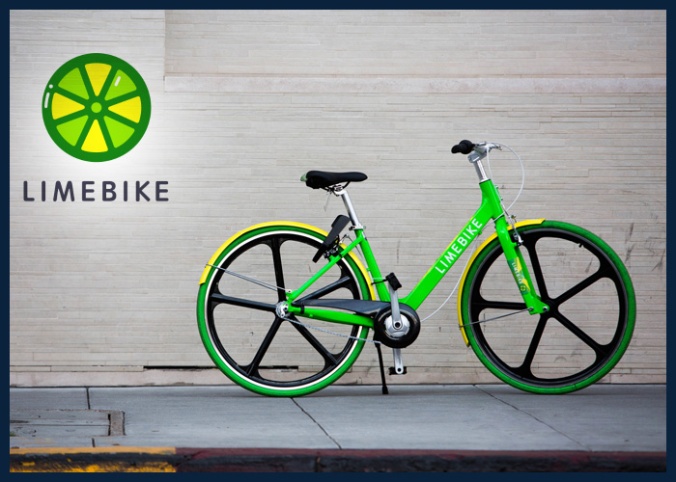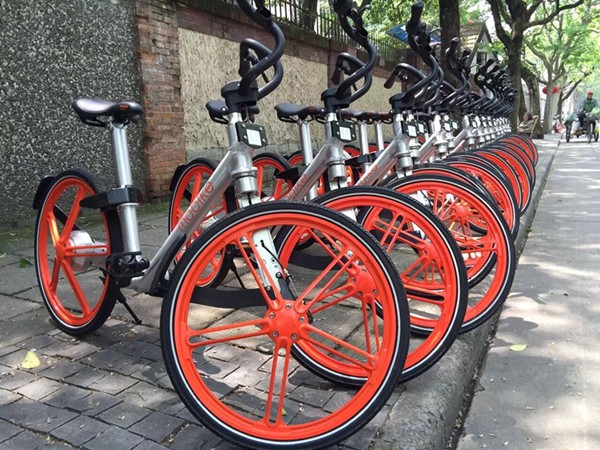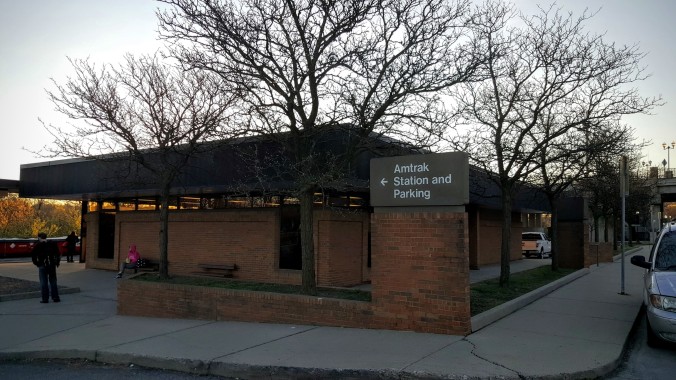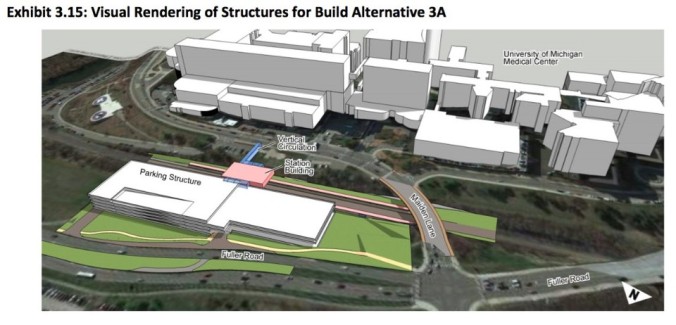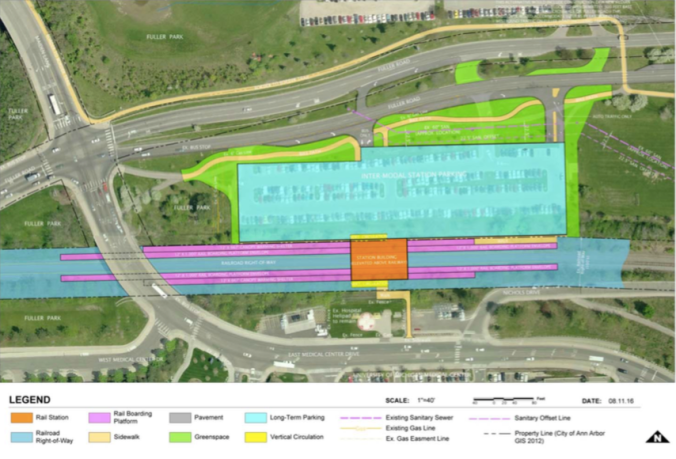This week city council will take a vote on re-zoning for the controversial 1140 Broadway development in Ann Arbor’s Lowertown neighborhood. From an urbanist perspective, there’s a lot to like about this proposal. The redevelopment of a blighted vacant lot, environmental cleanup, significant future tax revenue and strong density in an in-fill location near downtown and along a transit corridor. That said, the zoning change is somewhat questionable, the height and density is pushing the site to capacity, the architecture certainly isn’t groundbreaking, and the mix of uses is not as beneficial to the community as it could be. Because the project requires a generous re-zoning, this is a time where Ann Arbor needs to push back and absolutely demand we get the best project we can.
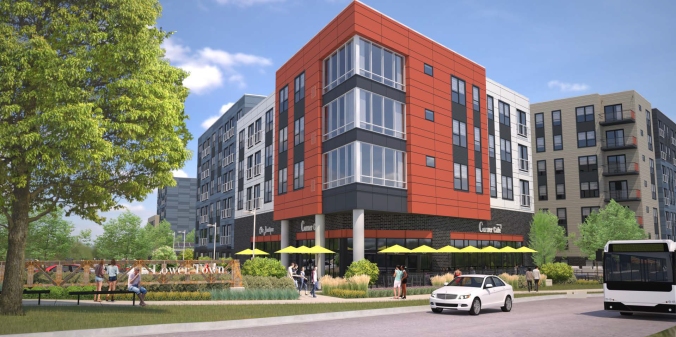
Rendering of the 1140 Broadway Lowertown Proposal
The Lowertown site has been one of the most visible parcels of vacant land in the city for over a decade now. Once home to Kroger and an adjoining retail center, the buildings were torn down in the mid-2000’s for an ambitious mixed-use project dubbed Broadway Village. This $171 million development included 152,689 square feet of office space, 138,275 square feet of retail, and 185 apartments. Planned by East Lansing-based Strathmore Development Co. with support from the State of Michigan, it never truly broke ground, killed off by the Great Recession.
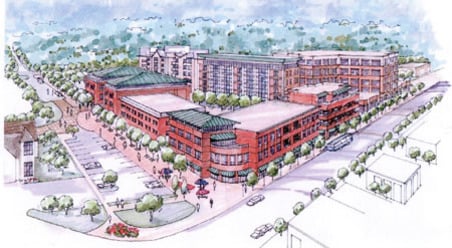
Rendering of the defunct Broadway Village proposal.
The 6.4 acre site at Broadway and Maiden Lane has sat fallow ever since, blighted and polluted. Fast forward to 2017 when Morningside Equities Group, led locally by Ann Arbor resident Ron Mucha, put forward a $146 million proposal to build 549 apartments, 71 condominiums, 4,635 square feet of retail and 573 parking spaces. The package includes $10.2 million in brownfield reimbursements from the city for environmental clean up and other “community benefit” improvements. The whole thing hinges on a re-zoning from the Planned Unit Development (“PUD”) zoning put in place in 2003 to C1A/R (Campus Residential). The spirit of that zoning is really intended for sites adjacent to central campus and is pretty generous in the heights and density it allows. The argument can be made that the Broadway site is next to the university’s Kellogg Eye Center and Wall Street campus (basically the Eye Center and a boatload of parking) but it’s dubious. As such, the city is in a position to make a few more demands than they would if the development was “by right”, designed to conform with existing zoning.
As I think about this project and how it might be improved, I keep returning to a somewhat similar development currently under construction in Detroit. City Modern is being built by Dan Gilbert’s Bedrock Detroit, LLC on 8.4 acres of land in Brush Park, just north of Downtown Detroit. The transformative development will add 410 total units, 303 apartments for rent (including 54 affordable senior units) and 107 for-sale condos along with 22,000 square feet of retail. There is a wide range of housing options includes flats, carriage houses and townhouses, all with striking modern architecture. This is true mixed-use, fitting into a historic neighborhood with a unique and thoughtful design. In contrast 1140 Broadway looks monolithic, fairly generic in its architecture, with one dominant housing type and a pittance of retail space in the third phase.
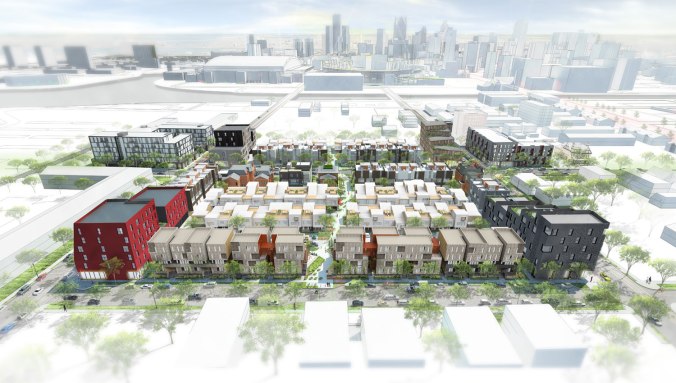
Rendering of City Modern development currently under construction in Brush Park in Detroit.
The community benefits of the Lowertown project are the 4,635 square feet of retail, environmental remediation, a commitment to 30 units of workforce housing and some greenway elements on the north end of the site along Traver Creek. Given that this is arguably the largest private residential development in the city’s history (Glencoe Hills is the largest apartment community in town, 574 units built in the 1970’s, Tower Plaza downtown would be a $149 million project in today’s dollars), it’s simply not enough. Developers don’t want to build retail right now, the future of the whole brick and mortar retail industry is in question, but there’s no reason this project can’t have more flexible commercial space, perhaps a mix of retail and office. This site deserves true mixed-use, not incredibly dense residential with a sidecar retail building that’s years away. The environmental cleanup is a positive but that’s somewhat of a given for any new development, funded by Brownfield Tax Credits. The 30 units of workforce is fine but I think 10% of units set aside for a mix of lower to median incomes should be a goal here, perhaps a senior element. The green space and path on the north of the site is a concession to the neighborhood but it’s just a trail from Broadway to a parking lot.

I don’t want this developer to walk away. They have a good track record in the city (Liberty Lofts most notably) with local ties. This site is in dire need of redevelopment and environmental remediation. But with re-zoning leverage, this site plan can be improved with further push-back from planning and council. A few places to start would be more true mixed-use with a greater balance of commercial space and residential, a better commitment to affordable and senior housing, and improved urban design with green space. Addressing these items would go a long way to making this project more exciting and deserving of this location.


